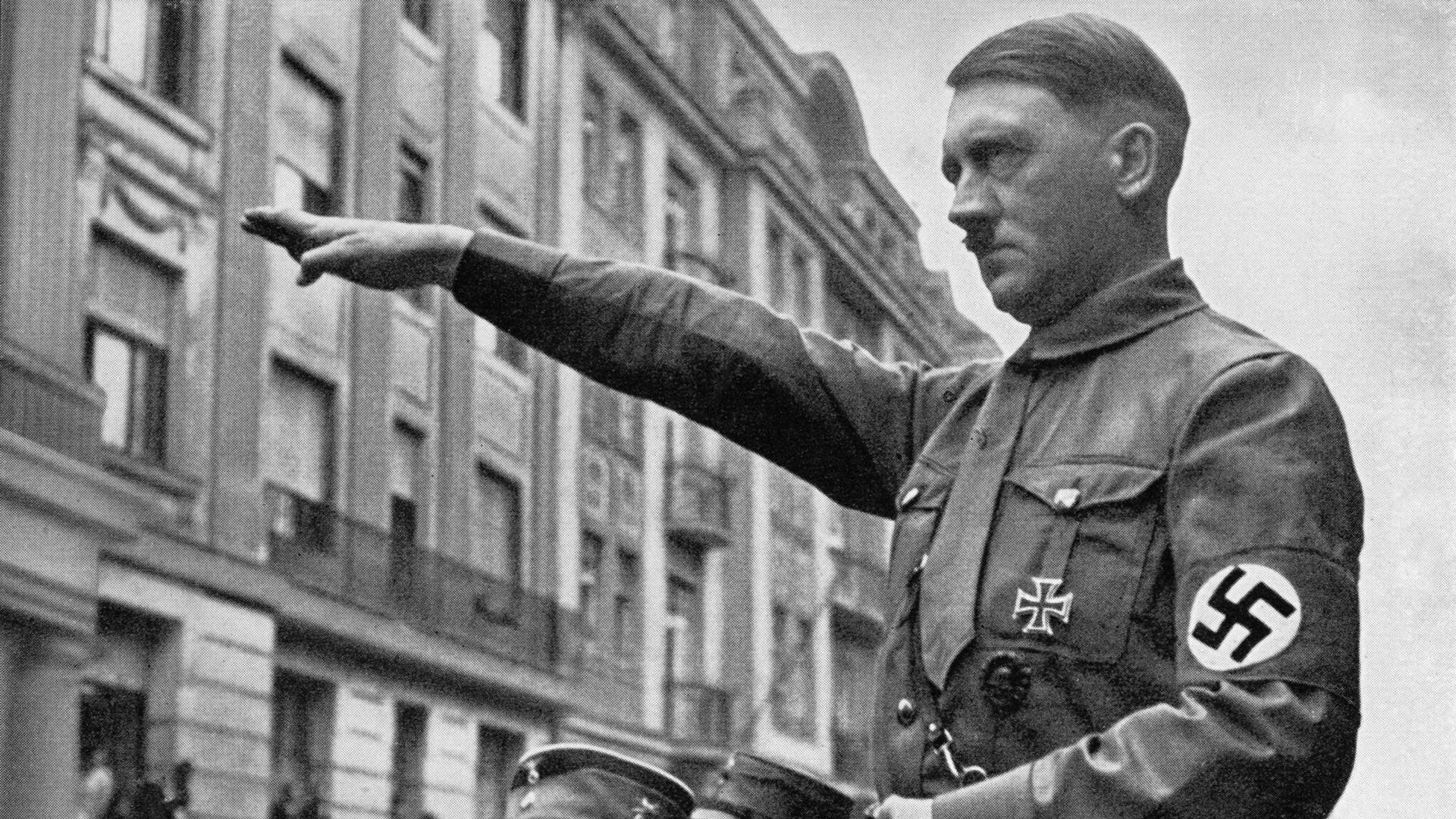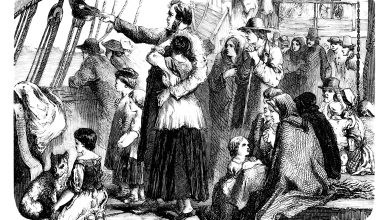The Making of a Dictator: 10 Pivotal Facts About Hitler’s Rise to Power

Adolf Hitler’s rise from a failed art student to the Führer of Germany is a tumultuous and dark chapter in the history of the 20th century. His ascendancy to power not only reshaped the geopolitical landscape of Europe but also led to World War II and the Holocaust, events that forever altered the course of human history.
This blog post will explore the ten pivotal moments and factors that catapulted Hitler from obscurity into one of the most notorious figures in history. From his early life and the series of failures he endured, to his manipulation of the German political system and the eventual establishment of a totalitarian regime, each section will shed light on the complex interplay of personal ambition, societal turmoil, and political cunning.
Join us as we dissect the making of a dictator, offering insights into how Hitler’s rise was not an inevitability but a consequence of specific historical conditions that serve as a cautionary tale for future generations.
1. Early Life and Failures
Adolf Hitler’s early life was marred by ambition, failure, and a series of unfortunate events that would later shape one of history’s most infamous careers.
Born in Austria in 1889, Hitler harbored early aspirations of becoming an artist, a dream that led him to Vienna, where he faced repeated rejections from the Academy of Fine Arts.
These formative failures were not just career setbacks but also personal afflictions that deeply impacted his psyche. The death of both his parents by his late teens left him adrift in a hostile world, struggling for direction and purpose. The psychological impact of these failures cannot be understated.
They fostered a sense of deep resentment and a drive for recognition that would fuel Hitler’s political ambitions.
His inability to accept rejection and his intense desire for dominance perhaps stem from these early brushes with failure, setting the stage for his later ascendancy to power, where he sought not only to reverse his personal fortunes but also to avenge perceived injustices against him.
2. Entry into Politics
The tumultuous post-World War I landscape in Germany set the stage for Adolf Hitler’s entry into politics. After the war, Germany found itself engulfed in economic hardship, political instability, and widespread discontent among its citizens. The Treaty of Versailles imposed severe reparations and territorial losses, exacerbating the nation’s humiliation and suffering.
It was within this context of disillusionment and anger that Hitler found fertile ground for his political ambitions. He was introduced to the German Workers’ Party (DAP) in 1919 and quickly rose through the ranks to become its leader.
The DAP, which later evolved into the Nazi Party under Hitler’s guidance, initially attracted him with its nationalist, anti-Semitic, and anti-Marxist ideologies.
This period marked a pivotal moment in Hitler’s life, transforming him from a disillusioned veteran into a rising political figure, adept at harnessing the widespread societal unrest for his agenda.
Through charismatic oratory and propaganda, he began to lay the groundwork for what would eventually become his totalitarian regime.
3. Formation of the Nazi Party
The transformation of the German Workers’ Party into the National Socialist German Workers’ Party (NSDAP or Nazi Party) marks a critical juncture in both Adolf Hitler’s ascent to power and the dark trajectory of 20th-century history.
Under Hitler’s charismatic leadership, what began as a fringe political group with limited influence underwent a dramatic rebranding and expansion, emerging as a formidable force in German politics.
Central to this transformation was the party’s ideology, which was meticulously crafted to resonate with a wide array of discontented Germans.
Hitler’s rhetoric skillfully blended fervent nationalism, virulent anti-Semitism, and anti-communist sentiments, appealing to the fears and frustrations of a populace struggling with the aftermath of World War I and the economic hardships of the 1920s.
The NSDAP’s ideology, amplified by Hitler’s charismatic oratory and the party’s growing mastery over propaganda, began to attract a significant following, setting the stage for the tumultuous and tragic events that would follow.
4. The Beer Hall Putsch
The Beer Hall Putsch, occurring in November 1923, stands as a pivotal yet failed coup attempt by Adolf Hitler and the nascent Nazi Party to seize control of the Bavarian government in Munich.
This audacious endeavor aimed to replicate Mussolini’s March on Rome, envisioning a rally from Munich to Berlin that would ultimately topple the Weimar Republic. However, the coup was poorly executed, lacking both the expected popular support and critical military backing.
The rebellion was swiftly quashed by the government forces, leading to the arrest of Hitler and other key conspirators. Far from spelling the end of Hitler’s political career, the aftermath of the Putsch turned out to be paradoxically beneficial for him and the Nazi Party.
Hitler’s subsequent trial for treason was widely publicized, providing a platform to broadcast his views, thereby gaining national attention. Though sentenced to a minimum term in the comfort of Landsberg Prison, Hitler used this time to dictate “Mein Kampf,” laying out his ideological vision for Germany.
Remarkably, the failed coup and Hitler’s imprisonment helped to solidify his role as a martyr in the eyes of his followers, ultimately strengthening the Nazi Party’s appeal and resolve.
5. Mein Kampf
“Mein Kampf,” penned by Adolf Hitler during his stint in Landsberg Prison following the failed Beer Hall Putsch of 1923, serves as both an autobiography and a detailed political manifesto.
This contentious work outlines Hitler’s ultranationalist, anti-Semitic, and anticommunist ideologies, laying the foundation for the Nazi Party’s future policies and practices.
Throughout the pages of “Mein Kampf,” Hitler presents a distorted worldview, positioning the Aryans as a “master race” while demonizing Jews as the root of all societal evils, from Marxism to capitalism, thus blaming them for Germany’s post-World War I difficulties.
The publication played a crucial role in the spread of Nazi ideology, providing a theoretical basis for the party’s radical agenda. Its widespread distribution and promotion, especially after Hitler’s rise to power in 1933, helped indoctrinate millions of Germans, solidifying the public’s support for the Nazi regime and its ensuing atrocities.
“Mein Kampf” not only offers insight into Hitler’s mind and the early foundations of Nazi philosophy but also acts as a grim reminder of the power of propaganda and the dangerous potential of unchecked ideological fanaticism.
6. Rebuilding and Rebranding the Nazi Party
Following Adolf Hitler’s release from prison, he embarked on a strategic overhaul of the Nazi Party, an effort that was critical in propelling it from the fringes of German politics to a dominant national force.
Recognizing the limitations of outright rebellion, Hitler pivoted towards legal means of gaining power, meticulously rebuilding the party’s structure to better facilitate mass mobilization and participation.
Central to this rebranding was the extensive use of propaganda, which Hitler and his associates wielded with unprecedented mastery.
The party orchestrated massive rallies, where theatricality and spectacle were used to stir emotions and rally support, creating a fervent sense of community and shared purpose among attendees.
These gatherings, combined with the relentless dissemination of propaganda through posters, newspapers, and the nascent medium of radio, helped to cultivate a cult of personality around Hitler and ingrained the party’s ideology into the collective consciousness of the German people.
This strategic rebranding and use of mass communication not only revitalized the Nazi Party but also laid the groundwork for its ascendancy to power, showcasing the potent combination of charisma, ideology, and media in shaping political fortunes.
7. The Great Depression
The Great Depression, a global economic downturn that began in 1929, profoundly impacted German society, exacerbating the already precarious post-World War I economic conditions. With the crash of the American stock market, Germany, heavily reliant on American loans under the Dawes Plan, found itself in an economic spiral.
Unemployment soared, reaching unprecedented levels, and the standard of living sharply declined, leaving millions in poverty and despair.
This widespread economic hardship created fertile ground for political extremism, as disillusioned citizens sought solutions outside the traditional political spectrum. The Nazi Party, under the leadership of Adolf Hitler, adeptly exploited the situation to its advantage.
By promising economic revival, employment, and the restoration of national pride, the Nazis appealed to a wide range of constituents, from the unemployed and veterans to the middle classes scared of communist revolution and societal collapse.
The economic desperation faced by many provided a backdrop against which the Nazi’s radical ideologies and promises of a better future resonated more profoundly, facilitating their rise to power.
The party’s adept use of propaganda further painted them as the only group capable of restoring Germany’s fortune, thereby accelerating their ascension in German politics during this turbulent period.
8. The Road to Power
The electoral successes of the Nazi Party, coupled with Adolf Hitler’s astute political maneuvering and strategic alliances, paved a critical path to power that culminated in their ascension in 1933.
In the wake of the economic desperation fueled by the Great Depression, the Nazi Party’s message found a resonant chord among the German populace, leading to significant electoral gains. The pivotal moment came in the July 1932 elections, where the Nazis emerged as the largest party in the Reichstag, albeit without an outright majority.
Hitler’s ability to manipulate the political landscape was further demonstrated through a series of alliances and backdoor dealings with conservative and nationalist factions disillusioned with the Weimar government’s inability to address the economic crisis. These alliances were instrumental in dismantling the barriers that previously hindered the Nazi Party’s path to power.
Despite initial resistance from President Paul von Hindenburg and the establishment, the tides turned in January 1933, when Hindenburg appointed Hitler as Chancellor, underestimating his ability to consolidate power. This appointment was the culmination of Hitler’s strategic political maneuverings, effectively setting the stage for the Nazi Party’s totalitarian regime.
Through a combination of electoral strategies and shrewd alliances, Hitler not only secured the reins of power but also systematically dismantled the Weimar Republic, steering Germany down the catastrophic path that would lead to World War II and the Holocaust.
9. The Reichstag Fire and the Enabling Act
The Reichstag Fire of February 27, 1933, marked a pivotal moment in the consolidation of Adolf Hitler’s power in Germany. This catastrophic incident, involving the arson of the German Parliament building, was immediately capitalized upon by the Nazi Party.
Hitler declared the fire as a communist conspiracy against the German government, leveraging the event to persuade President Paul von Hindenburg to issue the Reichstag Fire Decree. This decree suspended most civil liberties in Germany, including habeas corpus, freedom of expression, and the right to assemble.
In the aftermath, the Nazis intensified their crackdown on political opponents, particularly communists, which effectively stifled dissent and consolidated their control. This set the stage for the passage of the Enabling Act in March 1933, a piece of legislation that was crucial in Hitler’s ascent to absolute power.
The Act allowed Hitler and his cabinet to enact laws without the need for parliamentary consent, essentially nullifying the legislative power of the Reichstag and marking the end of democratic governance in Germany.
It legitimized Hitler’s dictatorial regime, enabling him to implement his radical policies without opposition, and laid the groundwork for the totalitarian state he would establish. Through these manipulations, Hitler swiftly transformed the political landscape of Germany, steering it towards autocracy under the guise of legal proceedings and national security.
10. The Consolidation of Power
The Reichstag Fire and the subsequent passing of the Enabling Act in early 1933 were critical junctures in Adolf Hitler’s consolidation of power in Germany, marking a formidable leap towards a totalitarian regime.
In the aftermath of the Reichstag Fire, Hitler, exploiting the atmosphere of fear and uncertainty, successfully convinced President Hindenburg to issue a decree that suspended most civil liberties, laying the foundation for the suppression of political opposition.
This strategic move effectively silenced dissent, particularly targeting communists and other political adversaries, under the guise of protecting the nation from perceived threats.
The Enabling Act further solidified Hitler’s grip on power by allowing his cabinet to enact laws without Reichstag consent, bypassing the very fabric of democratic governance.
These measures, executed with meticulous precision, eliminated checks and balances, ensuring that no legal mechanisms were left to challenge Nazi rule.
The swift suppression of opposition and the dismantling of democratic institutions facilitated the establishment of a totalitarian state, where Hitler wielded absolute control.
The Reichstag Fire and the Enabling Act were not merely episodes of political maneuvering but underscored the chilling efficiency with which Hitler and the Nazi Party eradicated political freedoms, setting the stage for one of the darkest chapters in human history.
Conclusion
In reflecting on Adolf Hitler’s meteoric rise to power, the culmination of strategic, political maneuverings, and the exploitation of social and economic upheavals, we’re forced to confront a complex tapestry of events that forever altered the course of modern history.
The story of Hitler’s ascent is not solely the chronicle of an individual’s quest for dominance, but a stark illustration of how the interplay between political cunning, socio-economic crises, and the erosion of democratic institutions can pave the way for totalitarian regimes.
It serves as a grim reminder of the vulnerabilities of democratic societies and the ease with which they can be undone in times of turmoil.
The lessons gleaned from this period are manifold, urging today’s societies to maintain a vigilant defense of democratic principles and civil liberties.
The significance of political engagement, the critical evaluation of political rhetoric, and the safeguarding of a free and open press are underscored as vital checks against the concentration of power.
Additionally, the Hitler era teaches us the importance of addressing economic inequalities and social grievances, which can serve as fertile ground for radical ideologies.
Hitler’s rise to power, culminating in the atrocities of World War II and the Holocaust, underscores the catastrophic impact that can ensue when unchecked political ambition is coupled with societal desperation. This era of history compels us to reflect on the mechanisms of power, the responsibilities of citizenship, and the vigilance required to protect democracy.
It emphasizes the need to learn from the past to ensure that such darkness does not find its way back into our collective future. The story of Hitler’s ascension is a powerful testament to the fragility of freedom and the relentless need for its defense.




